REFUSING TO QUIT:
WINNING THE RIGHT TO CONSCIENTIOUSLY OBJECT AT MURDOCH UNIVERSITY
By Andrew Knight
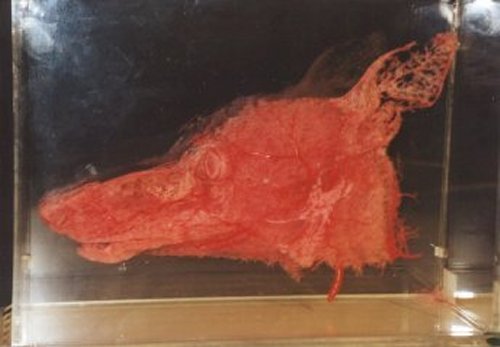
[Above] Cast of dog's head blood vessels, Murdoch University, Western Australia, Australia. (Photo by Andrew Knight, 1999)
On the 11th of November, 1998, Western Australia's Murdoch University took the groundbreaking step of formally allowing conscientious objection by students to animal experimentation or other areas of their coursework. Murdoch is, to my knowledge, the first Australian university to formally take this step, and its decision will have ramifications for other Australian universities. Additionally the University reviewed the humane alternatives available in all 45 teaching units using animals within its veterinary, biomedical and biological science courses, and concluded on the 15th of September, 1999, that, "… Murdoch was in a position to and should
aim to conduct teaching that does not require animals to be killed specifically for this purpose by 2005". These victories did not come easily but followed a year-long struggle by myself as a Murdoch veterinary student for humane alternatives to be made available to harmful animal usage in the veterinary course. This is the story of how we won.
How it all began ...
For me it all began back in the deep, dark mists of time when someone hollered at me to "Get a job!" I think I was demonstrating outside a circus at the time. For years I had alternated between travelling, working in unqualified jobs, and periods of unemployment during which I campaigned on animal rights and other issues. I'd always thought it was who you were and what you did that was important, not what job you held. Nevertheless, it began to annoy me when I was asked in interviews what I did for a living. Once I realized that people judge the merits of your arguments by things such as your appearance, manner and qualifications, I began to seriously wonder if I should try to get into a profession.
I thought about a number of professions, but becoming a veterinarian seemed likely to enable me to do the most good. Whilst I care about all the "green-left" issues, I care most about animal rights, and the thought of healing animals all day long seemed like a dream come true. Not to mention the enormous impact being a veterinarian would have on my ability to campaign effectively on animal rights issues, in which case I just can't wait to be asked some day by an opponent what I do for a living.
And so it was that I went back to school, studied hard, and made it into the vet course. I had the vague idea that parts of my training might involve doing nasty things to animals and also a vague idea that alternatives were probably available, but was ignorant of the details of either. I rationalised that if I was forced to perform unethical experiments it would be worth it because I would be able to do so much good as a qualified vet.
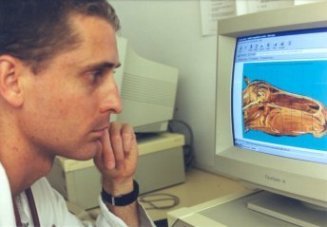 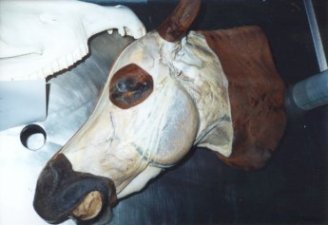
[Above Left] Andrew Knight with computer simulation of a horse's head dissection, Murdoch University, Western Australia, Australia. (Photo by Michael Wearne, 1999) [Above Right] Facial nerves of the horse. Student dissection project (Anatomy), Murdoch University, Western Australia, Australia. (Photo by Andrew Knight, 1998)
First blood in first year
Thus unprepared I entered first year. In the introductory biology units we dissected cockroaches, snails, worms, fish, rats, and body parts from abattoirs. For some reason there seemed to be a strange obsession with lampreys. I tried not to think too much about where all these bodies had come from. I was finally brought up hard against reality at the end of first year by a Cell Biology laboratory class. Rats were killed by demonstrators and the still-living intestinal segments extracted so that the students might investigate their role in the absorption of glucose from various solutions. At last the animals were not appearing neatly prepared from some unknown location but were being killed right there and then for our use. The unavoidable reality of it finally snapped me out of my dream world.
On this occasion however I was poorly prepared. I only voiced my opposition on the morning of the lab and had not studied the alternatives available nor the arguments. The academics in charge were hostile and I was refused an alternative assessment, which cost me a grade. I was, however, the first in many years to boycott a lab and this stirred up a great deal of controversy, with some academics supporting me. This controversy, combined with economic pressures, eventually resulted in the entire lab being cancelled in 1998, which saved the lives of around 30-50 rats each year.
At one stage I endured a fairly unpleasant meeting with two of the academics in charge of Cell Biology, during which they attempted to change my views. I knew that many of their claims were wrong but was frustrated by my inability to respond effectively due to my ignorance of the arguments. They left me with dire warnings that the Cell Biology lab was only the tip of the iceberg compared to what I would later have to face in the vet course and suggested that I reevaluate my suitability for the course. Their warnings did not have the desired effect but instead motivated me to research the alternatives and arguments in greater depth.
Making preparations
I sent out urgent appeals for help to animal rights groups around the world and discovered that I was not alone. I received help from several but three in particular deserve special mention. The Humane Society International (HSI) provided me with constant moral support and invaluable contacts, amongst other things. The European Network of Individuals & Campaigns for Humane Education (EuroNICHE) provided me with advice on conscientious objection and summaries of the relevant legislation on the rights of European students.
Their book From Guinea Pig to Computer Mouse is quite simply probably the best book on educational alternatives in the world today and was to prove invaluable to me. It lists nearly 400 humane alternatives including many for the physiology labs I would later boycott.
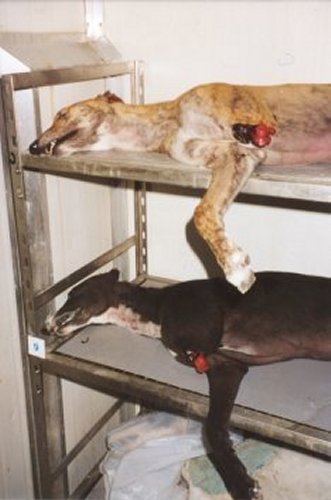
|
The US Association of Veterinarians for Animal Rights (AVAR) provided me with details of the rapidly expanding field of alternatives in veterinary training in the US.
And so it was that I learnt that the number of humane alternatives available worldwide has grown exponentially in the last decade, with a similar rise in the number of courses in which they are offered. By January 1999 the number of veterinary medical colleges in the United States offering alternative programs for students who request them had increased to 21 out of 27. By 1997 just over half of the 126 US medical schools had completely eliminated animal usage and all bar one of the remainder were offering alternative programs. The sole exception was a military college. For years all 6 of the UK vet schools have had, by Australian standards, an alternative system. Instead of practising surgical exercises on donated greyhounds and other animals that are later killed, students learn by assisting with necessary surgery on real patients that actually benefit from the surgery, in the same way that human doctors learn. Some of these changes have occurred after students have taken legal action as a last resort. |
[Above] Partially dissected greyhounds - anatomy coolroom, Murdoch University, Western Australia, Australia (Photo by Andrew Knight, 1998)
The variety of alternatives used in such courses is rapidly increasing and databases listing thousands of educational alternatives now exist. They include computer simulations, videos, plasticised specimens,ethically-sourced cadavers, models, diagrams, self-experimentation and clinical experiences. In medical and veterinary courses alternatives at the preclinical level are mainly focused upon imparting knowledge, whilst those at the clinical level impart surgical skills as well.
Alternative veterinary surgical courses comprise a number of stages. In the beginning students learn basic psychomotor skills such as suturing and instrument handling using knot tying boards, simulated organs, and other models. They then progress to simulated surgery on ethically-sourced cadavers obtained from animals that have died naturally or in accidents or been euthanased for medical reasons. Finally students observe, assist with, and then perform necessary surgery under close supervision on real patients that actually benefit from the surgery, as distinct from using healthy animals that are later killed.
An important part of alternative veterinary surgical courses worldwide are the highly popular animal shelter sterilisation programs, in which homeless animals are sterilised by students under close supervision and returned to the shelters. The popularity of these programs stems in part from the fact that all parties gain from them. The animals have their adoption rates consistently increased by these programs, the students gain invaluable experience at some of the most common procedures they will later perform in practice, and their vet school has its image enhanced by providing a useful community service.
Finally, I learnt of the numerous scientific studies affirming the competence of alternative students compared with those trained by harming animals. The studies examined the performances of medical, veterinary, biology and pharmacology students and in almost all cases concluded that the alternative students were at least as competent. By August 1999 the Humane Society (US) website listed 28 studies affirming the superior or equivalent efficacy of alternative methods in imparting knowledge or surgical skills.
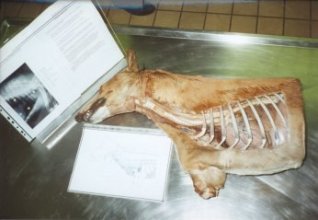 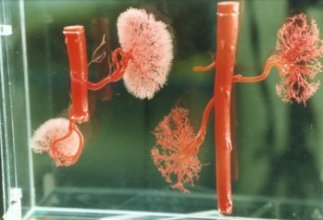
[Above Left] Canine thoracic cavity - student dissection project (Anatomy), Murdoch University, Western Australia, Australia. (Photo by Andrew Knight, 1998) [Above Right] Cast of canine kidney blood vessels, Murdoch University, Western Australia, Australia. (Photo by Michael Wearne, 1999)
Now I knew about the alternatives, the courses worldwide where they're successfully used, and the many published studies showing that alternative students are at least as competent. It was undeniably clear to me that there was no need to kill to learn how to heal.
However one last element remained. What was I to do if my academics proved unwilling to listen to reason? I needed legal advice. It came in the form of another book: Vivisection and Dissection in the Classroom: A Guide to Conscientious Objection, by Gary Francione and Anna Charlton (publisher: American Anti-Vivisection Society, 1992). This book was also to prove invaluable to me. It gave step by step instructions on how to approach my academics. Advice included: take a witness to all meetings and keep a detailed diary of events. If academics are hostile limit all communications to letters, and keep copies. Sample letters were included, as well as detailed responses to some of the arguments my academics might use.
Thus armed I was prepared to face 2nd year. Following step one of the book I first worked out my position in detail. I decided I would compromise as far as I possibly could, and thereby hopefully exert moral pressure on the vet school to similarly compromise. Although there were many things I didn't like, I decided to take a stand only on those practicals where animals were being seriously harmed or killed, primarily for the purposes of the prac. I would take blood and urine samples via catheters, as the level of harm in these cases was minimal. I would dissect greyhounds euthanased because they could no longer race fast enough to make money, or
abattoir byproducts, because in these cases the animals were killed primarily for other reasons. However, where animals were being seriously harmed or killed primarily for the purposes of the practical, I would take a stand.
A month before classes were due to start I went and asked the relevant academics what animal usage was involved in their units. Animals were to be seriously harmed or killed in 4 labs in both biochemistry and physiology. I stated that participation in such labs would violate my conscientiously held beliefs and requested alternative assessments. I was joined at this point by a friend, Michael Taylor. Alternatives were granted to us in biochemistry, where we were allowed instead to write theoretical reports, but not in physiology.
Second year: Welcome to Hell
Upon the commencement of classes we discovered that the second year labs made those in first year look tame. Students and demonstrators killed sheep, guinea pigs, rats, toads and other animals in order to demonstrate scientific principles that have been established for decades. The worst were in physiology, where groups of students anaesthetised sheep, then performed vivisectionist experiments on them. Students cannulated arteries and veins (inserted tubes) and injected various drugs to demonstrate the effects on blood pressure. In some cases arteries were occluded entirely. They severed nerves to demonstrate the effects on heart rate, and forced their victims to breathe various gases to demonstrate the effects on respiraton.
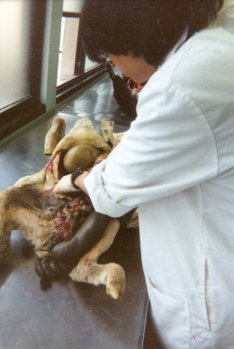
|
One procedure involved occluding the air supply entirely. The instructions read:
"Watch the animal closely and if respiration ceases return immediately to air. It may then be necessary to artificially respire the animal for a short time." However the lab guide gave no instructions on how to do so. Not surprisingly I was later told that several sheep died prematurely during this lab.
At the end of all experiments the surviving sheep were killed by students via drug overdoses before regaining consciousness. Students were instructed to open up the chest cavities to ensure the sheep would not come back to life. Incredibly, one of the stated objectives was that students would develop a sense of responsibility for an animal under their care, and the academics maintained that the labs were not desensitising. The farcical nature of these claims was demonstrated by the student who was thrilled to discover, upon placing her hand inside a sheep's chest cavity, that she could actually feel the animal's heart stop as it died |
[Above] Sheep abdominal organs and student (Anatomy class), Murdoch University, Western Australia, Australia. (Photo by Andrew Knight, 1998)
Fighting and winning
Our refusal to participate in several of these physiology labs cost us marks. During the course of second year I spoke many times with the physiology unit coordinator who was a hard-core vivisector. I gave her details of alternatives, of courses around the world where they're successfully used, and of the many scientific studies that demonstrate that alternative students are at least as competent as those trained by harming animals. I put my case to both her and the Dean in writing but still they refused to give any ground.
As a last resort I took action through the state Equal Opportunity Commission. In this I used the legal strategy outlined in Vivisection and Dissection in the Classroom: A Guide to Conscientious Objection. It seems that in both Australia and the US, there is, as yet, no legal protection for students upholding mere ethical beliefs. However, there is strong protection in both countries for students acting in accordance with their religious beliefs. It has been shown many times in US courts that a religious belief need not be theistic (belief in a God or Gods), nor traditional, but merely needs to be a fundamental belief that has a significant impact on the life of the believer. Students who have "reverence for life" beliefs are covered and the courts are satisfied of their sincerity if they are vegan and refuse to use products tested on animals, etc. My beliefs are not theistic, nor traditional, but would easily satisfy the above definition. Additionally, most English dictionaries include as a definition of religious belief, "any sincerely held belief to which one is devoted or bound," or words to that effect. The Australian Concise Oxford Dictionary uses, "A thing one is devoted to or bound to do", and the Heinmann Australian Dictionary uses, "Any practice, matter, etc., treated with devotion or keen conscientiousness."
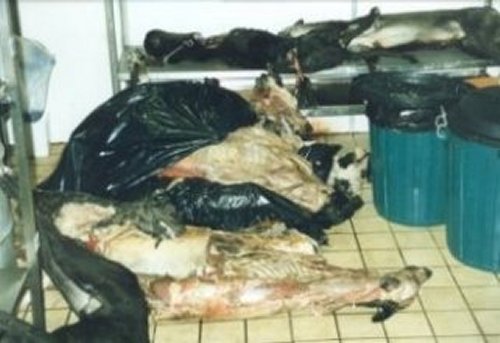
[Above] Partially dissected greyhounds #2 (Anatomy coolroom), Murdoch University, Western Australia, Australia. (Photo by Andrew Knight, 1998)
Thus armed, I formally complained to the state Equal Opportunity Commission that I had been discriminated against in my education on the grounds of my religious beliefs, which is illegal under the state Equal Opportunity Act (1984). They had never encountered a case like mine and looked up the definition of religious belief under the Act, only to discover that it was undefined. They decided that, as I had indeed made a case that my beliefs could be considered religious, they would provisionally take the case on.
The Commission has the power to order an offending institution to cease its discriminatory actions and even make redress for past damages, up to a maximum of $40,000; however it first seeks to resolve cases by extensive efforts at conciliation. Average case resolution time is six months. Negotiations commenced and the university wisely decided to give my marks back fairly early in the process, thus denying me a more significant legal precedent and avoiding further adverse publicity.
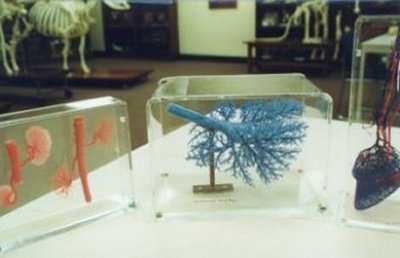
[Above] Coloured casts of airways and blood vessels, Murdoch University, Western Australia, Australia. (Photo by Michael Wearne, 1999)
Victory on the anniversary of Armistice Day
The biggest victories, however, came on the 11th of November, 1998. Murdoch's Academic Council unanimously adopted the recommendations of 2 reports that had resulted from initiatives put to the Council by our student representatives. The first report was on conscientious objection in teaching and assessment and was prepared by a working party set up to examine the issue. The Council adopted all of its recommendations, including the following:
"The University recognises that some students may have a conscientious belief which is in conflict with teaching and/or assessment practices in one or more units in which they enrol. The University shall endeavour to make reasonable accommodations to meet such beliefs."
And so it was that the university formally opened the doors to conscientious objection by students who object to harming or killing animals in their coursework. However the decision was not limited just to animal usage. The resolution will help students with conscientiously held beliefs of any kind, including, for example, those of students whose religious beliefs prevent them from taking examinations or performing work experience on holy days.
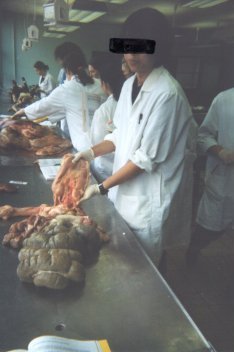
|
The second report considered by the Council was prepared by Murdoch's Animal Welfare Officer and endorsed by its Animal Ethics Committee. The report was on animal usage in teaching throughout the university. The Council adopted its recommendation by launching a major review of animal usage and the alternatives available in all 45 teaching units in which animals were used. The review was in keeping with the University's obligation of compliance with the National Health & Medical Research Council (NHMRC) Australian Code of Practice for the Care and Use of Animals for Scientific Purposes (1997). The Code states that:
"Techniques which replace or complement the use of animals in scientific and teaching activities must be sought and used wherever possible" (Section 1.9), and,
"Animals are to be used for teaching activities only when there are no suitable alternatives for achieving the educational objectives" (Section 7.1.1).
Western Australia is presently the only Australian state in which the Code is not yet incorporated into legislation (this is also the case in the Northern Territory). |
[Above] Student with pig intestines from the abattoir (Anatomy class), Murdoch University, Western Australia, Australia. (Photo by Andrew Knight, 1998)
However with the expected passage in 1999 - 2000 of Western Australia's new Animal Welfare Act it is likely that breaches of the Code will become punishable by statutory penalties.
The result of this review of animal usage was a Report on the Review of the Use of Animals in Teaching, which, as stated previously, urged Murdoch to eliminate the killing of animals for teaching purposes by 2005. The high standard and very progressive nature of this report make it a worthy model for other Australian universities. Its recommendations, if implemented, have the potential to propel Murdoch to the forefront of humane education within Australia. They were passed by Academic Council on the 15th of September, 1999.
The media storm
The enlightened decisions taken by Academic Council in November 1998 were nothing less than historic. The university is, to our knowledge, the first Australian university to formally allow conscientious objection by students. This presented media opportunities not to be missed. It was time to give the university some public praise for its decisions and to start to get the message out to other Australian universities. In this we were hugely successful, achieving extensive TV, radio and newspaper coverage. One was an excellent front page story in the Murdoch area local newspaper; another was on page 9 of Saturday's The West Australian. This is the state's biggest selling newspaper with a circulation of just under 1,000,000. Both of these stories had large photos. We also achieved a flood of letters to the Editor congratulating the university. I am particularly grateful to the following Perth groups who provided invaluable assistance in gaining this media coverage: Animal Rights Advocates (ARA), Compassion for Animals (CFA), and The Greens (WA). My final exams were underway at the time so I had the added entertainment of having to juggle interviews with exams.
Into the future
By becoming, to my knowledge, Australia's first university to formally allow conscientious objection, Murdoch has demonstrated its commitment to equity and cemented its reputation as one of Australia's most progressive institutions. By reviewing the humane alternatives in all teaching units using animals, and concluding that, "… Murdoch was in a position to and should aim to conduct teaching that does not require animals to be killed specifically for this purpose by 2005", Murdoch now has the opportunity to become an Australian leader in this area as well.
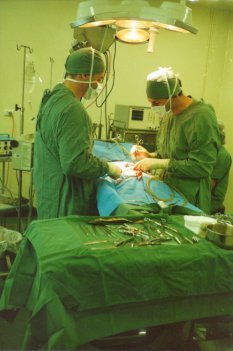
|
Murdoch has shown the way and it is now up to other Australian universities to follow Murdoch's lead. In particular it is up to their enlightened students and staff members to make it happen. In order to assist them I have amassed a considerable wealth of resources and useful contacts that I am keen to make available. I am also working on a "How to" guide to conscientious objection for Australian students. I am seeking funding to assist with the production of this booklet and its donation to Australian tertiary libraries, along with other resources on humane alternatives and conscientious objection, including Vivisection and Dissection in the Classroom: A Guide to Conscientious Objection and From Guinea Pig to Computer Mouse.
If you are a student or staff member considering tackling your university on the issues of conscientious objection and humane alternatives then these are the sorts of tools you need to win. More important than any tool, however, is the determination not to quit until every option has been exhausted. This was really how we won at Murdoch. With determination like this, resources like these, and Murdoch's precedent to use, the next university should only be easier. Why not make it yours! |
[Above] Student (left) assisting with beneficial surgery on a real patient (dog), Murdoch University, Western Australia, Australia. (Photo by Andrew Knight, 1997)
Update: By April 2000, 20 of the 31 North American vet schools were offering alternatives to invasive experiments or other procedures, with 18 offering alternatives to terminal surgeries. The latest statistics on alternatives offered in North American vet schools can be found on the US Association of Veterinarians for Animal Rights website.
Acknowledgments
I gratefully acknowledge the assistance of the Association of Veterinarians for Animal Rights (AVAR) and the European Network of Individuals & Campaigns for Humane Education (EuroNICHE) for allowing the use of excerpts from the following publications within this article:
· AVAR, (1998), "An interview with Andrew Knight," Directions, Summer 1998, No. 52, pp. 4-5
· Jukes, Nick, (Ed.), (1998), "Andrew Knight (Australia)," in Conscientious Objection to Animal Use in Education: Testimonies From Twelve Students, Leicester, UK: EuroNICHE
About the Writer Andrew Knight
My name is Andrew Knight. I have been an animal rights activist since the early 1990s. In 1997 I entered the veterinary course at Murdoch University with the intention of increasing my ability to effectively campaign on animal rights issues by becoming a qualified vet. During my time here I launched a highly successful campaign against animal experimentation within the veterinary course. I had 2 major victories: On the 11th Nov 1998 Murdoch became the first Australian university to allow students to conscientiously object to animal experimentation in their learning. Students studying at Murdoch must now be provided with an alternative.
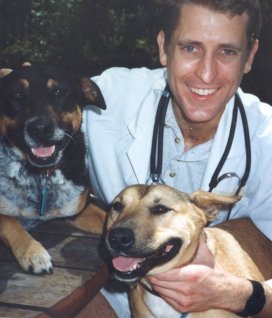
|
On the 15th Sep 1999 the University accepted some 15 positive recommendations resulting from a review into the use of animals in teaching, which concluded that, "Murdoch was in a position to and should aim to conduct teaching that does not require animals to be killed specifically for this purpose by 2005."In 1997 I played a major role in the cancellation of a first year Cell Biology lab class in which 30-50 rats were killed each year. In 1998 I presented a detailed submission to Murdoch's Animal Ethics Committee listing 163 alternatives for 9 labs, and organised a panel of students to speak to the committee. The result was the cancellation of almost all of the labs, in which approximately 24-31 toads, 26-32 sheep and a small but unspecified number of guinea pigs were killed annually. My future plans include the production in 2000 of a guide to conscientious objection for Australian students, including a section on the legal rights of Australian students not to participate in animal experiments, and a national student outreach program to encourage students Australia-wide to boycott animal experiments in their teaching and introduce humane alternatives at their universities. |
[Above] Photo of Andrew Knight by Michael Wearne, 1998.
I Next I
Back I
Exit I
Thylazine No.2 (September, 2000) |



